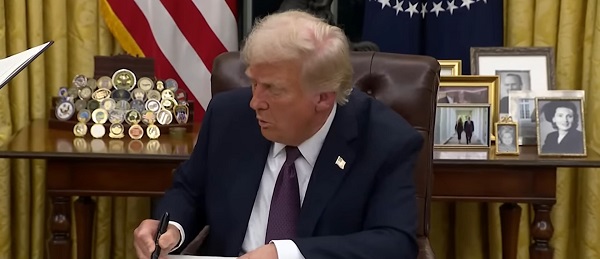Brownstone Institute
Stop Vaccinating Children: It’s Neither Medically Justified Nor Ethical

BY
As time passes, Covid policy is proving to be a bigger threat than Covid disease. Promoted as an initial protection measure to buy much-needed time against a once-in-a-century pandemic, it became a way of life to which health bureaucrats and autocratically-inclined leaders became addicted and are having trouble letting go.
Yet in the UK: “The effects of lockdown may now be killing more people than are dying of Covid.” An editorial in the Telegraph emphasized the importance of establishing why a meaningful cost-benefit analysis of Covid policy was not carried out. Former UK Supreme Court Justice Lord Sumption describes lockdown as “an experiment in authoritarian government unmatched in our history even in wartime.” Australia’s vaunted success in controlling the pandemic in 2020–21, meanwhile, looks increasingly hollow in 2022 (Figure 1).

The instinct to protect offspring is one of the most powerful in nature across all species, with examples only too common of parents, especially mothers, sacrificing themselves in a desperate effort to save their young. On September 4, on the edge of the Bandhavgarh Tiger Reserve in central India, Archana Choudhary was working in the fields with her 15-month toddler when a tiger appeared and sunk its teeth into the baby’s head. Choudhary grappled the tiger with her bare handstrying to free the baby from its jaws until, hearing her screams, villagers came to her assistance with sticks and stones and the tiger fled. Both Mum and Bub were taken to hospital, with the mother’s wounds being the more serious. A real-life Tiger Mom!
The hardwired instinct to protect children might explain why in jurisdictions where vaccines have been approved for children, the takeup, especially for young children, has lagged well behind the adult vaccination rates. The effort to psychologically nudge and politically coerce children’s vaccination is abhorrent, distressing and puzzling in equal measures.
Children Are at Very Low Risk
Abhorrent, because it’s an acute manifestation of the evil that has taken hold following the fear induced in peoples by deliberate psychological campaigns of terror propaganda, aided and abetted by mainstream and social media. Large numbers of people in Western societies have actively colluded with governments in imposing harms on children. Debbie Lerman wrote an excellent account on this site of how instilling and sustaining mass fear was the one unifying theme that explains all the otherwise crazy edicts and policy interventions by the US government.
In almost all Western countries, the average age of Covid deaths has been higher than the average life expectancy and the mortality risk to children is lower by a thousandfold. This is the first occasion in history where children have been made to bear the heaviest costs, with futures mortgaged to massive debts, educational opportunities drastically curtailed and exposure to potentially harmful and even lethal medical interventions, just so the old can cling on to life for a few more months and years. Take two telling examples.
In January UNICEF reported on the devastating setbacks to children’s education. Robert Jenkins, UNICEF Chief of Education, said “we are looking at a nearly insurmountable scale of loss to children’s schooling.” Large-scale independent studies published in early September documented a two-decade reversal in children’s educational progress in the US. Japan experienced a jump in suicides by more than 8,000 between March 2020 and June 2022 compared to pre-pandemic numbers, mostly among women in their teens and 20s.
Unlike the flu, which tends not to discriminate between different age cohorts, coronavirus is very age-specific. The exceptional and extreme age-segregation of Covid deaths was known very early in the pandemic. On April 30, 2020, the Daily Mail reported that children under 10 are not transmitters of the disease. Despite more than 26,000 Covid-related deaths in the UK, experts who reviewed the data failed to find a single case of an infected under-10 who had passed on the disease to an adult.

The BBC reported on May 7, 2020 that in England and Wales, there were only around 300 deaths in under-45s compared to around 24,000 in over-65s. Older people with pre-existing health conditions were the most at risk, as shown in a visually striking age-adjusted graph from the BBC (Figure 2). For those under 20, the risk is negligible. In October 2020, the Great Barrington Declaration – with 932,500 signatories currently, including 63,100 doctors and medical and public health scientists – noted that the mortality risk of Covid in the young was a thousand-fold less than in the old and infirm.
On June 30, 2021, Prof. Robert Dingwall, a member of the Joint Committee on Vaccination and Immunisation that advises the UK government, said letting children catch Covid would be better than vaccinating them. Their intrinsically low risk from Covid means they may be “better protected by natural immunity generated through infection than by asking them to take the ‘possible’ risk of a vaccine.”
In July, Stanford University’s Cathrine Axfors and John Ioannidis published their estimate that survivability of infected under-20s is 99.999%, falling to 99.958% for the under-50s..
The persistence of the drive to vaccinate children is puzzling because the lockdown and vaccine narratives are falling apart. One driver of this is the growing realization that excess death counts from all-cause mortality have risen in many countries, including Australia, Netherlands and the UK.
Death is the one statistic that cannot be fudged or subjected to definitional spin. In their analysis of the 50 US states, John Johnson and Denis Raincourt show that if anything, lockdown states have higher all-cause mortality rates than contiguous non-lockdown states. In many cases deaths also seem to track vaccination campaigns in successive doses.
In part the situation reflects the monomaniacal obsession with Covid to the exclusion of other leading killer diseases. The Telegraph pointed out that the UK National Health Service is once again on the verge of collapse, this time from “a tsunami of non-Covid patients who were denied treatment during the pandemic.”
Lockdown Back Pedalling
As noted by Carl Heneghan and Tom Jefferson of Oxford University, prominent practitioners of evidence-based medicine rather than modelling-based projections, the “lockdown back-pedalling race” has begun. In late August, former UK Chancellor Rishi Sunak said it had been a mistake to empower the government’s scientific advisory committee SAGE, whose analyses and forecasts were dominated by gloom and doom unless stringent restrictions were put in place yesterday.
He added that insufficient attention had been paid to the knock-on effects of lockdowns on health, education and the economy. The fear messaging had also been wrong and harmful in destroying trust in public institutions. Critics attributed his Damascene conversion to a desperate effort to revive his faltering campaign for leadership of the Conservative Party and hence becoming prime minister of the UK.
I believe this is wrong. By then the writing was clearly on the wall and Sunak, by all accounts a fundamentally decent man, wanted to go on the public record, inwardly accepting that he had already lost, in order to put obstacles in the path of future lockdowns. In that sense Sunak’s Spectator interview is more accurately read as the start of the unravelling of the great Covid narrative. Sure enough, he was soon followed by former cabinet colleagues and parliamentarians.
Former Transport Secretary Grant Shapps revealed he brought along his own spreadsheets on international data to cabinet discussions to counter SAGE analysis and advice. Even Sunak’s leadership rival, and now PM, Liz Truss claims she too was opposed to lockdowns. Unfortunately, this is contradicted by her public record but no matter, she has boxed herself in as regards returning to lockdown in the future.
Meanwhile, Denmark has banned vaccines for under-18s and under-50s can get a booster only with a doctor’s prescription. The CDC’s new guidance acknowledges the “transient” protection from vaccination against infection and transmission and the reality of naturally-acquired immunity through infection.
It therefore recommended against any further discrimination by vaccination status for most settings. Yet, again demonstrating bureaucrats’ infinite capacity for idiocy, the ban on unvaccinated visitors to the US was maintained and stopped Novak Djokovic from competing in athe US Open that was denuded of serious star power in the men’s semis and finals.
Vaccines for Australian Children
In Israel, as succinctly summarized by Will Jones, public health authorities and the government deliberately covered up serious vaccine side-effects. In September we learnt that several Australian health officials were on a government- sponsored visit as guests of Israel’s Ministry of Health.
On July 19, Australia’s Therapeutic Goods Administration (TGA) granted provisional approval to Moderna for administering Spikevax vaccines to children aged 0.5–5 years. Provisional because they are still undergoing clinical trials to assess full safety. The decision is especially strange in light of concerning reports of deaths, adverse events and long-term side-effects accompanying vaccines. The Therapeutic Goods Regulation (1990) restricts provisional approvals to medicines for “the treatment, prevention or diagnosis of a life-threatening or seriously debilitating condition.”
This would appear to rule out provisional vaccine approval for children below five, as shown in the empirical data from New South Wales (NSW). The resilience of the under-50s can be seen in Figure 3. In the 14-week period May 22–August 27, they made up 27.3% of Covid-related hospitalization and 19.7% of ICU admissions, but only 1.4% of deaths. In the same period, just 0.11% of all Covid-related deaths in NSW were children and young people up to the age of 19 (Figure 4).


On this basis, a group of lawyers is aiming to file a crowd-funded case in the High Court (Australia’s equivalent of the US Supreme Court) against the decision. But so far Australian courts have been disappointingly supine toward health edicts.
The TGA’s website states that its “regulatory costs are mostly recovered through annual fees and charges levied on the sponsors and manufacturers of therapeutic goods.” An article in the British Medical Journal by Maryannne Demasi, published on June 29, documented that a compromising 96% of the TGA’s A $170mn 2020–21 budget came from industry sources, higher than the rates (in descending order) for the European, UK, Japanese, US and Canadian counterparts.
This is beyond regulatory capture and closer to the regulator being in the pocket of the regulated. Should we be surprised that the TGA approved nine of every ten applications from drug companies that year? The TGA “firmly denies that its almost exclusive reliance on pharmaceutical industry funding is a conflict of interest,” and the TGA is an honourable regulator. Yet the sad reality is the global drug industry has a particularly scandal-ridden record in influencing regulatory decisions via funding with regard, for example, to opioids, Alzheimer’s drugs, influenza antivirals, pelvic mesh, joint prostheses, breast and contraceptive implants, cardiac stents, etc.
In the Declaration for the Protection of Children and Young People from the Covid-19 Response in May 2021, the Pandemics Data and Analytics (PANDA) group said that Covid-19 is “a disease for which they [the young] carry essentially no risk.” Therefore vaccinating children is “all risk, no benefit.” Are we really going to engage in child sacrifice on the altar of Big Pharma?
Directing attention and resources without age-stratified discrimination – because “everyone is equally at risk” – made no medical or policy sense, unless, as Lerman postulates, the primary goal was to inculcate a self-sustaining state of mass panic. So even the children had to be routinely tested, isolated, deschooled, masked and vaccinated as part of what Swedish Dr. Sebastian Rushworth called the “Covid mania” and “collective state of hysteria.”. Universal vaccines is like the drunk looking for car keys near the light from the street lamp instead of where he lost them.
Against the extremely low serious risk from Covid with a survival rate of 99.99% for 0-19 year olds, the likely greater risk from vaccines, and the completely unknown long-term effects of the new-technology vaccines, if I had young children, I’d resist attempts to jab them, to the death if necessary.
Ordinarily, it would be best to put the whole Covid nightmare behind us and move on. This might be one of the rare exceptions, for accountability for the pain and harms inflicted on individuals and society is the best, and likely the only effective insurance against a repeat.
On July 23 the World Health Organization declared monkeypox, which so far has affected few people in a handful of countries, a public health emergency of international concern.
David Bell and Emma McArthur warn that the global pandemic industry has no plans for a return to normal. This is why the chief architects of population-wide lockdown and vaccine policies must be identified, put in the dock and made to answer and pay for their misdeeds.
Lest we forget.
Brownstone Institute
Net Zero: The Mystery of the Falling Fertility

From the Brownstone Institute
By
If you want to argue that a mysterious factor X is responsible for the drop in fertility, you will have to explain (1) why the factor affected only the vaccinated, and (2) why it started affecting them at about the time of vaccination.
In January 2022, the number of children born in the Czech Republic suddenly decreased by about 10%. By the end of 2022, it had become clear that this was a signal: All the monthly numbers of newborns were mysteriously low.
In April 2023, I wrote a piece for a Czech investigative platform InFakta and suggested that this unexpected phenomenon might be connected to the aggressive vaccination campaign that had started approximately 9 months before the drop in natality. Denik N – a Czech equivalent of the New York Times – immediately came forward with a “devastating takedown” of my article, labeled me a liar and claimed that the pattern can be explained by demographics: There were fewer women in the population and they were getting older.
To compare fertility across countries (and time), the so-called Total Fertility Rate (TFR) is used. Roughly speaking, it is the average number of children that are born to a woman over her lifetime. TFR is independent of the number of women and of their age structure. Figure 1 below shows the evolution of TFR in several European countries between 2001 and 2023. I selected countries that experienced a similar drop in TFR in 2022 as the Czech Republic.

So, by the end of 2023, the following two points were clear:
- The drop in natality in the Czech Republic in 2022 could not be explained by demographic factors. Total fertility rate – which is independent of the number of women and their age structure – dropped sharply in 2022 and has been decreasing ever since. The data for 2024 show that the Czech TFR has decreased further to 1.37.
- Many other European countries experienced the same dramatic and unexpected decrease in fertility that started at the beginning of 2022. I have selected some of them for Figure 1 but there are more: The Netherlands, Norway, Slovakia, Slovenia, and Sweden. On the other hand, there are some countries that do not show a sudden drop in TFR, but rather a steady decline over a longer period (e.g. Belgium, France, UK, Greece, or Italy). Notable exceptions are Bulgaria, Spain, and Portugal where fertility has increased (albeit from very low numbers). The Human Fertility Project database has all the numbers.
This data pattern is so amazing and unexpected that even the mainstream media in Europe cannot avoid the problem completely. From time to time, talking heads with many academic titles appear and push one of the politically correct narratives: It’s Putin! (Spoiler alert: The war started in February 2022; however, children not born in 2022 were not conceived in 2021). It’s the inflation caused by Putin! (Sorry, that was even later). It’s the demographics! (Nope, see above, TFR is independent of the demographics).
Thus, the “v” word keeps creeping back into people’s minds and the Web’s Wild West is ripe with speculation. We decided not to speculate but to wrestle some more data from the Czech government. For many months, we were trying to acquire the number of newborns in each month, broken down by age and vaccination status of the mother. The post-socialist health-care system of our country is a double-edged sword: On one hand, the state collects much more data about citizens than an American would believe. On the other hand, we have an equivalent of the FOIA, and we are not afraid to use it. After many months of fruitless correspondence with the authorities, we turned to Jitka Chalankova – a Czech Ron Johnson in skirts – who finally managed to obtain an invaluable data sheet.
To my knowledge, the datasheet (now publicly available with an English translation here) is the only officially released dataset containing a breakdown of newborns by the Covid-19 vaccination status of the mother. We requested much more detailed data, but this is all we got. The data contains the number of births per month between January 2021 and December 2023 given by women (aged 18-39) who were vaccinated, i.e., had received at least one Covid vaccine dose by the date of delivery, and by women who were unvaccinated, i.e., had not received any dose of any Covid vaccine by the date of delivery.
Furthermore, the numbers of births per month by women vaccinated by one or more doses during pregnancy were provided. This enabled us to estimate the number of women who were vaccinated before conception. Then, we used open data on the Czech population structure by age, and open data on Covid vaccination by day, sex, and age.
Combining these three datasets, we were able to estimate the rates of successful conceptions (i.e., conceptions that led to births nine months later) by preconception vaccination status of the mother. Those interested in the technical details of the procedure may read Methods in the newly released paper. It is worth mentioning that the paper had been rejected without review in six high-ranking scientific journals. In Figure 2, we reprint the main finding of our analysis.

Figure 2 reveals several interesting patterns that I list here in order of importance:
- Vaccinated women conceived about a third fewer children than would be expected from their share of the population. Unvaccinated women conceived at about the same rate as all women before the pandemic. Thus, a strong association between Covid vaccination status and successful conceptions has been established.
- In the second half of 2021, there was a peak in the rate of conceptions of the unvaccinated (and a corresponding trough in the vaccinated). This points to rather intelligent behavior of Czech women, who – contrary to the official advice – probably avoided vaccination if they wanted to get pregnant. This concentrated the pregnancies in the unvaccinated group and produced the peak.
- In the first half of 2021, there was significant uncertainty in the estimates of the conception rates. The lower estimate of the conception rate in the vaccinated was produced by assuming that all women vaccinated (by at least one dose) during pregnancy were unvaccinated before conception. This was almost certainly true in the first half of 2021 because the vaccines were not available prior to 2021. The upper estimate was produced by assuming that all women vaccinated (by at least one dose) during pregnancy also received at least one dose before conception. This was probably closer to the truth in the second part of 2021. Thus, we think that the true conception rates for the vaccinated start close to the lower bound in early 2021 and end close to the upper bound in early 2022. Once again, we would like to be much more precise, but we have to work with what we have got.
Now that the association between Covid-19 vaccination and lower rates of conception has been established, the one important question looms: Is this association causal? In other words, did the Covid-19 vaccines really prevent women from getting pregnant?
The guardians of the official narrative brush off our findings and say that the difference is easily explained by confounding: The vaccinated tend to be older, more educated, city-dwelling, more climate change aware…you name it. That all may well be true, but in early 2022, the TFR of the whole population dropped sharply and has been decreasing ever since.
So, something must have happened in the spring of 2021. Had the population of women just spontaneously separated into two groups – rednecks who wanted kids and didn’t want the jab, and city slickers who didn’t want kids and wanted the jab – the fertility rate of the unvaccinated would indeed be much higher than that of the vaccinated. In that respect, such a selection bias could explain the observed pattern. However, had this been true, the total TFR of the whole population would have remained constant.
But this is not what happened. For some reason, the TFR of the whole population jumped down in January 2022 and has been decreasing ever since. And we have just shown that, for some reason, this decrease in fertility affected only the vaccinated. So, if you want to argue that a mysterious factor X is responsible for the drop in fertility, you will have to explain (1) why the factor affected only the vaccinated, and (2) why it started affecting them at about the time of vaccination. That is a tall order. Mr. Occam and I both think that X = the vaccine is the simplest explanation.
What really puzzles me is the continuation of the trend. If the vaccines really prevented conception, shouldn’t the effect have been transient? It’s been more than three years since the mass vaccination event, but fertility rates still keep falling. If this trend continues for another five years, we may as well stop arguing about pensions, defense spending, healthcare reform, and education – because we are done.
We are in the middle of what may be the biggest fertility crisis in the history of mankind. The reason for the collapse in fertility is not known. The governments of many European countries have the data that would unlock the mystery. Yet, it seems that no one wants to know.
Author
Brownstone Institute
FDA Exposed: Hundreds of Drugs Approved without Proof They Work

From the Brownstone Institute
By
The US Food and Drug Administration (FDA) has approved hundreds of drugs without proof that they work—and in some cases, despite evidence that they cause harm.
That’s the finding of a blistering two-year investigation by medical journalists Jeanne Lenzer and Shannon Brownlee, published by The Lever.
Reviewing more than 400 drug approvals between 2013 and 2022, the authors found the agency repeatedly ignored its own scientific standards.
One expert put it bluntly—the FDA’s threshold for evidence “can’t go any lower because it’s already in the dirt.”
A System Built on Weak Evidence
The findings were damning—73% of drugs approved by the FDA during the study period failed to meet all four basic criteria for demonstrating “substantial evidence” of effectiveness.
Those four criteria—presence of a control group, replication in two well-conducted trials, blinding of participants and investigators, and the use of clinical endpoints like symptom relief or extended survival—are supposed to be the bedrock of drug evaluation.
Yet only 28% of drugs met all four criteria—40 drugs met none.
These aren’t obscure technicalities—they are the most basic safeguards to protect patients from ineffective or dangerous treatments.
But under political and industry pressure, the FDA has increasingly abandoned them in favour of speed and so-called “regulatory flexibility.”
Since the early 1990s, the agency has relied heavily on expedited pathways that fast-track drugs to market.
In theory, this balances urgency with scientific rigour. In practice, it has flipped the process. Companies can now get drugs approved before proving that they work, with the promise of follow-up trials later.
But, as Lenzer and Brownlee revealed, “Nearly half of the required follow-up studies are never completed—and those that are often fail to show the drugs work, even while they remain on the market.”
“This represents a seismic shift in FDA regulation that has been quietly accomplished with virtually no awareness by doctors or the public,” they added.
More than half the approvals examined relied on preliminary data—not solid evidence that patients lived longer, felt better, or functioned more effectively.
And even when follow-up studies are conducted, many rely on the same flawed surrogate measures rather than hard clinical outcomes.
The result: a regulatory system where the FDA no longer acts as a gatekeeper—but as a passive observer.
Cancer Drugs: High Stakes, Low Standards
Nowhere is this failure more visible than in oncology.
Only 3 out of 123 cancer drugs approved between 2013 and 2022 met all four of the FDA’s basic scientific standards.
Most—81%—were approved based on surrogate endpoints like tumour shrinkage, without any evidence that they improved survival or quality of life.
Take Copiktra, for example—a drug approved in 2018 for blood cancers. The FDA gave it the green light based on improved “progression-free survival,” a measure of how long a tumour stays stable.
But a review of post-marketing data showed that patients taking Copiktra died 11 months earlier than those on a comparator drug.
It took six years after those studies showed the drug reduced patients’ survival for the FDA to warn the public that Copiktra should not be used as a first- or second-line treatment for certain types of leukaemia and lymphoma, citing “an increased risk of treatment-related mortality.”
Elmiron: Ineffective, Dangerous—And Still on the Market
Another striking case is Elmiron, approved in 1996 for interstitial cystitis—a painful bladder condition.
The FDA authorized it based on “close to zero data,” on the condition that the company conduct a follow-up study to determine whether it actually worked.
That study wasn’t completed for 18 years—and when it was, it showed Elmiron was no better than placebo.
In the meantime, hundreds of patients suffered vision loss or blindness. Others were hospitalized with colitis. Some died.
Yet Elmiron is still on the market today. Doctors continue to prescribe it.
“Hundreds of thousands of patients have been exposed to the drug, and the American Urological Association lists it as the only FDA-approved medication for interstitial cystitis,” Lenzer and Brownlee reported.
“Dangling Approvals” and Regulatory Paralysis
The FDA even has a term—”dangling approvals”—for drugs that remain on the market despite failed or missing follow-up trials.
One notorious case is Avastin, approved in 2008 for metastatic breast cancer.
It was fast-tracked, again, based on ‘progression-free survival.’ But after five clinical trials showed no improvement in overall survival—and raised serious safety concerns—the FDA moved to revoke its approval for metastatic breast cancer.
The backlash was intense.
Drug companies and patient advocacy groups launched a campaign to keep Avastin on the market. FDA staff received violent threats. Police were posted outside the agency’s building.
The fallout was so severe that for more than two decades afterwards, the FDA did not initiate another involuntary drug withdrawal in the face of industry opposition.
Billions Wasted, Thousands Harmed
Between 2018 and 2021, US taxpayers—through Medicare and Medicaid—paid $18 billion for drugs approved under the condition that follow-up studies would be conducted. Many never were.
The cost in lives is even higher.
A 2015 study found that 86% of cancer drugs approved between 2008 and 2012 based on surrogate outcomes showed no evidence that they helped patients live longer.
An estimated 128,000 Americans die each year from the effects of properly prescribed medications—excluding opioid overdoses. That’s more than all deaths from illegal drugs combined.
A 2024 analysis by Danish physician Peter Gøtzsche found that adverse effects from prescription medicines now rank among the top three causes of death globally.
Doctors Misled by the Drug Labels
Despite the scale of the problem, most patients—and most doctors—have no idea.
A 2016 survey published in JAMA asked practising physicians a simple question—what does FDA approval actually mean?
Only 6% got it right.
The rest assumed that it meant the drug had shown clear, clinically meaningful benefits—such as helping patients live longer or feel better—and that the data was statistically sound.
But the FDA requires none of that.
Drugs can be approved based on a single small study, a surrogate endpoint, or marginal statistical findings. Labels are often based on limited data, yet many doctors take them at face value.
Harvard researcher Aaron Kesselheim, who led the survey, said the results were “disappointing, but not entirely surprising,” noting that few doctors are taught about how the FDA’s regulatory process actually works.
Instead, physicians often rely on labels, marketing, or assumptions—believing that if the FDA has authorized a drug, it must be both safe and effective.
But as The Lever investigation shows, that is not a safe assumption.
And without that knowledge, even well-meaning physicians may prescribe drugs that do little good—and cause real harm.
Who Is the FDA Working for?
In interviews with more than 100 experts, patients, and former regulators, Lenzer and Brownlee found widespread concern that the FDA has lost its way.
Many pointed to the agency’s dependence on industry money. A BMJ investigation in 2022 found that user fees now fund two-thirds of the FDA’s drug review budget—raising serious questions about independence.

Yale physician and regulatory expert Reshma Ramachandran said the system is in urgent need of reform.
“We need an agency that’s independent from the industry it regulates and that uses high-quality science to assess the safety and efficacy of new drugs,” she told The Lever. “Without that, we might as well go back to the days of snake oil and patent medicines.”
For now, patients remain unwitting participants in a vast, unspoken experiment—taking drugs that may never have been properly tested, trusting a regulator that too often fails to protect them.
And as Lenzer and Brownlee conclude, that trust is increasingly misplaced.
- Investigative report by Jeanne Lenzer and Shannon Brownlee at The Lever [link]
- Searchable public drug approval database [link]
- See my talk: Failure of Drug Regulation: Declining standards and institutional corruption
Republished from the author’s Substack
-

 Business2 days ago
Business2 days agoWEF-linked Linda Yaccarino to step down as CEO of X
-

 Automotive2 days ago
Automotive2 days agoAmerica’s EV Industry Must Now Compete On A Level Playing Field
-

 Business2 days ago
Business2 days ago‘Experts’ Warned Free Markets Would Ruin Argentina — Looks Like They Were Dead Wrong
-

 Alberta1 day ago
Alberta1 day agoAlberta school boards required to meet new standards for school library materials with regard to sexual content
-

 International2 days ago
International2 days agoSecret Service suspends six agents nearly a year after Trump assassination attempt
-

 Business1 day ago
Business1 day agoCarney government should recognize that private sector drives Canada’s economy
-

 Bruce Dowbiggin1 day ago
Bruce Dowbiggin1 day agoThe Covid 19 Disaster: When Do We Get The Apologies?
-

 Alberta1 day ago
Alberta1 day agoFourteen regional advisory councils will shape health care planning and delivery in Alberta









